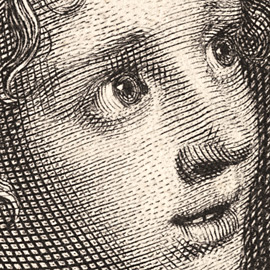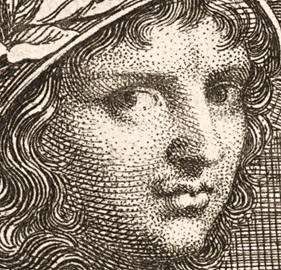|
Both Gérard Edelinck and Gérard Audran were superb draftsmen whose printmaking techniques produced very different pictorial effects. Edelinck's meticulous method reproduces the polished surface of Le Brun's painted Queens of Persia, while Audran's freer technique complements the looser brushwork of the other Alexander canvases. By the late 18th century, Audran's Alexander prints were judged the epitome of printmaking, in part because they appeared to improve upon Le Brun's original paintings. |
| |
|

|
|
Queens of Persia at the Feet of Alexander (detail), Gérard Edelink after Charles Le Brun, ca. 1675 | 
|
|
|
|
For the Queens of Persia, Edelinck made a preliminary etching of the composition. (Etched lines are achieved by drawing with an etching needle on a treated copperplate, which is then exposed to acid.) He then engraved over most of the etched lines with a burin, the tool he used to manually incise sharper lines into the copper. With their typical pointed ends, the precisely engraved lines vary in shape, width, and length. The sometimes subtle shifts in the direction of the lines, as well as the lozenge-and-dot pattern, suggest both the topography of the face and the volume of the head.
|
|

|
| Triumphal Entry into Babylon (detail), Gérard Audran after Charles Le Brun, 1675 | 
|
|
|
|
For his four Alexander pictures, Audran employed his particular mixed technique in which expressive etched lines maintain their autonomy next to those he engraved. The majority of the lines and stippling are etched. The parallel hatching on Alexander's cheek is engraved. |